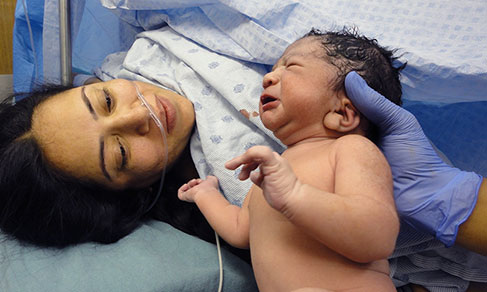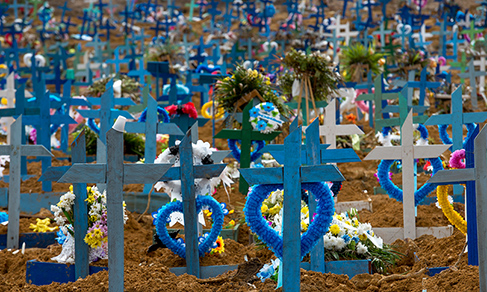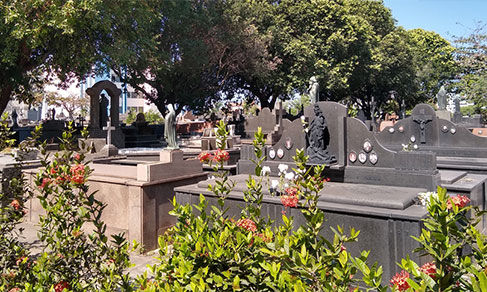Nossos serviços estão apresentando instabilidade no momento. Algumas informações podem não estar disponíveis.
System of Vital Statistics
About - 2023
The Vital Statistics survey gathers information related to live births, marriages, deaths and fetal deaths reported by the Civil Registry Offices of Natural Persons, to legal divorces reported by Family Courts, Forums or Civil Courts, as well as to out-of-court divorces, which, according to Law no. 11,441, of January 4, 2007, were carried out by Notary Public Offices, provided that they do not involve minors or incapacitated persons. However, it should be highlighted that, after the establishment of Resolution no. 571, of August 26, 2024, of the National Council of Justice (CNJ), in case of common infant or incapacitated children, the public deed of divorce was also allowed, once duly ascertained the previous judicial settlement of all issues related to their custody, visitation and maintenance, established in the deed. It should be highlighted that the data on live births, deaths, fetal deaths and marriages in the state of São Paulo result from the covenant signed with the State System for Data Analysis Foundation (SEADE), which collects and calculates this information.
This report brings analytical commentaries on some results of these events in 2023. The commentaries are graphically illustrated, making comparisons with 2022 and, for some events, with previous periods.
Like in the previous editions, this report highlights the increasing improvement in the coverage of vital records, which reflects both the result of public policies developed to broaden the access of the population to the basic documentation since their birth, and the improvement of the mechanisms of compilation and edit of the data collected by the IBGE.
The Vital Statistics reports are also made available in digital and printed format. The technical notes about the survey are released apart and can be accessed only in digital format, on this page. They bring methodological considerations about the survey, with information related to its objective, geographic scope, concepts and definitions adopted, among other aspects.
The IBGE also releases the time series of vital statistics records and marriages from 1974 onwards, as well as of separations and divorces from 1984 onwards, year in which these two subjects were incorporated into the survey. Concerning separations, the data were released up to 2013.
In addition to the geographic scope included in the survey - Municipalities, Micro-regions, Meso-regions, Metropolitan Areas, Integrated Development Regions (RIDEs), Federation Units, Major Regions and Brazil -, the following territorial levels were included from 2021 onwards: Immediate Geographic Regions and Intermediate Geographic Regions. The incorporation of these typologies and regionalizations broadens the analysis of the occurrence of the events surveyed in different parts of the National Territory.
In addition to the valuable subsidies to demographic studies, Vital Statistics are an important tool to follow up the evolution of the Brazilian population, especially in the inter-censuses periods, when vital statistics are critical for deeper demographic studies, as well as they provide elements to follow up the exercise of citizenship, assess public policies, especially in the areas of Health and Human Rights, and better understand the changes occurred in the society.
Main results - 2023
#tabelasidra2017101123933599
#tabelasidra2017101124022205
#tabelasidra2017115104647868
Tables - 2023
Complete Tables
Live Births (xls | xlsx | ods)
Fetal Deaths (xls | xlsx | ods)
Concepts and methods - 2023
As informações a seguir descrevem os metadados estatísticos, que são o conjunto de conceitos, métodos e aspectos relacionados às estatísticas, e são informações necessárias para compreender as características e a qualidade das estatísticas e interpretá-las corretamente.
Informações Gerais
Objetivo
A Pesquisa Estatísticas do Registro Civil tem o objetivo de subsidiar estudos demográficos, a construção de indicadores de estatísticas vitais, análises regionais e locais sobre fecundidade, nupcialidade e mortalidade e contribuir para o aprimoramento de políticas públicas nos diversos níveis governamentais.Tipo de operação estatística
Registros administrativos de pessoa naturalTipo de dados
Registros administrativosPeriodicidade de divulgação
AnualPopulação-alvo
Atualmente a população-alvo é constituída dos eventos vitais de nascimentos, óbitos, óbitos fetais e casamentos registrados em cartório e dos divórcios concedidos em primeira instância em varas ou lavrados em tabelionatos.Metodologia
A Agência do IBGE, ao receber os dados, procede à verificação do nível de qualidade das informações, utilizando o Manual de Instrução da Pesquisa. Os dados recebidos em questionário de papel são digitados e passam pelo módulo de crítica do sistema de apuração. No caso dos cartórios informatizados, a crítica é feita na recepção dos dados eletrônicos. Após essa etapa, as informações são armazenadas utilizando o sistema Oracle, sob a supervisão das Superintendências Estaduais e da Diretoria de Tecnologia da Informação do IBGE.
Exclusivamente em São Paulo, o Colégio Notarial transfere os dados de divórcios que são âmbito da pesquisa por meio de arquivo único, depois de compiladas as informações dos tabelionatos do estado. A Fundação SEADE encaminha, também em arquivo único, os dados de nascimentos e óbitos fornecidos pelos cartórios do estado. Nas varas a coleta é realizada pelas Agências do IBGE.
Na Coordenação de População e Indicadores Sociais as informações são tratadas em um processo de crítica final e análise. Registros com suspeita de inconsistência são verificados junto ao informante pelas agências. Uma vez finalizados os procedimentos mencionados, os dados são armazenados na Base de Dados do IBGE, estando disponíveis para os trabalhos de divulgação. Para tanto, existe um plano de divulgação informatizado, que emite automaticamente as tabelas. Após ser sistematizado, revisado e analisado, este material, notas técnicas e a publicação (informativo) são enviados à Gerência de Disseminação de Informações - DPE/GDI e, posteriormente, ao Centro de Documentação e Disseminação de Informações - CDDI, para a editoração, impressão da publicação (informativo) e divulgação dos resultados na página web da Pesquisa de Estatísticas do Registo Civil no portal do IBGE.
Técnica de coleta:
Transcrição de documento administrativo, OutroProcedimento de amostragem
Não se aplica. Trata-se de pesquisa censitária.Crítica e imputação
A crítica dos dados é realizada no decorrer da coleta. Solicita-se confirmação junto ao informante sobre variáveis ignoradas, suspeita de registros de gêmeos, registros duplicados, registros omitidos, entre outros. O sistema de coleta dos dados tem uma funcionalidade que identifica registros com incoerência nas informações prestadas. Não há imputação de dados.Temas
Temas e subtemas
População, Nupcialidade, Componentes da dinâmica demográfica e estatísticas vitaisPrincipais variáveis
1. Características dos registros de nascidos vivosData do nascimento
Idade da mãe na ocasião do parto
Local de nascimento
Lugar do registro.
Lugar de residência da mãe
Sexo
2. Características dos registros de óbitos
Data do óbito
Idade do falecido
Local de ocorrência
Lugar do registro
Lugar de residência do falecido
Natureza do óbito
Sexo
3. Características dos registros de óbitos fetais
Duração da gestação
Idade da mãe na ocasião do parto
Local de nascimento
Lugar do registro
Lugar de residência da mãe
Sexo
4. Características dos registros de casamentos
Data do casamento
Idade dos cônjuges
Sexo dos cônjuges
Lugar do registro
Estado civil dos cônjuges
5. Divórcios
Idade dos cônjuges
Sexo dos cônjuges
Lugar da ação do processo ou da escritura
Natureza da ação
Regime de bens do casamento
Responsável pela guarda dos filhos
Tempo transcorrido entre as datas do casamento e do divórcio
Tipo de divórcio
Tipo de família
Palavras-chave
População, Nupcialidade, Nascimento, Óbito, Óbito fetal, Casamento, Divórcio, Registro civil, Fecundidade, MortalidadeUnidades de informação
Unidade de investigação
PessoaUnidade de análise
PessoaUnidade informante
Órgão da Administração Pública.Períodos de referência
Data de início da coleta
02/04/2023Data do fim da coleta
27/11/2024Disseminação
Formas de disseminação
Publicação Digital (online), Banco Multidimensional de Estatísticas - BME, Banco de Dados Agregados - SIDRANível de desagregação geográfica
MunicípioNível de divulgação
As estatísticas do registro civil são divulgadas em diversos níveis territoriais: município, microrregião, mesorregião, regiões metropolitanas, regiões integradas de desenvolvimento, unidades da federação, grandes regiões e Brasil. A partir de 2021, passaram a ser divulgados os seguintes níveis territoriais: regiões geográficas imediatas, regiões geográficas intermediárias, recortes metropolitanos, categoria metropolitana, subcategoria metropolitana.Instrumentos de coleta
RC - Divórcios Judiciais DJ
RC - Manual de Instrução
RC.1 - Nascidos vivos
RC.10 - Folha de Cadastro
RC.2 - Casamentos
RC.3 - Óbitos
RC.4 - Óbitos Fetais (Nascidos mortos, Natimortos, Fetos) .
Histórico
O registro civil teve suas origens no país no período colonial, com a obrigatoriedade do casamento por escritura pública, em 1784. Ao longo de vários períodos da história brasileira, o registro civil passou por inúmeras modificações e esteve sob a coordenação de vários órgãos, em um processo diversificado de implantação e consolidação.
Em 1814, proibiu-se o sepultamento de pessoas sem certidão passada por médico ou outro facultativo. Na segunda metade do século XIX, surgiram os decretos que regulamentaram casamentos e o registro de óbitos dos que não professavam a fé católica. Em 1889, com a Proclamação da República, foi criado o registro civil de pessoas naturais e as estatísticas de nascimentos, óbitos e casamentos deixaram de ser atribuições da Igreja Católica, passando à Diretoria Geral de Estatística e, mais tarde, ao Serviço de Estatística Demográfica, Moral e Política, do Ministério da Justiça.
O atual sistema do registro civil resultou do Decreto n° 70.210, de 28.02.1972, e das atribuições delegadas pela Lei n° 6.015, de 31.12.1973, com as modificações introduzidas pelas Leis n° 6.140, de 28.11.1974, e n° 6.216, de 30.06.1975. A Lei n° 6.015/73 transferiu a responsabilidade pelo processamento das estatísticas vitais do âmbito do Ministério da Justiça para o então Ministério do Planejamento, estabelecendo as normas relativas ao registro civil de pessoas naturais, tendo sido o IBGE o órgão público designado para o processamento dessas estatísticas. O propósito foi oferecer prova irrefutável a respeito do estado dos principais fatos da vida humana.
O decreto dispôs sobre a coleta e o processamento das estatísticas do registro civil, determinando que o IBGE seria responsável por fornecer os formulários necessários aos oficiais dos cartórios do registro civil e que estes deveriam devolver ao instituto os dados referentes aos nascimentos, matrimônios e óbitos registrados, até o oitavo dia dos meses de janeiro, abril, julho e outubro de cada ano.
No caso das separações e dos divórcios, a coleta das informações junto às varas cíveis e de família iniciou-se em 1984, amparada na Lei nº 5.534, de 14.11. 1968, a qual determina que toda pessoa natural ou jurídica que esteja sob a jurisdição da lei brasileira é obrigada a prestar informações solicitadas pelo IBGE.
Em 2007, os dados sobre separações e divórcios passaram a ser coletados também nos Tabelionatos do país, conforme a Lei nº 11.441, 04.01.2007, a qual possibilitou a dissolução consensual do casamento extrajudicialmente através de escrituras públicas no caso de casais sem filhos menores de idade ou incapazes.
Em 2010, a alteração no artigo 226 da Constituição Federal suprimiu o pré-requisito da separação e dos prazos para a efetivação do divórcio. Por esse motivo, desde 2014, a Pesquisa Estatísticas do Registro Civil não coleta dados de separações judiciais, tendo seguido a coleta dos dados sobre divórcios judiciais e extrajudiciais.
Em 2013, pela primeira vez, as Estatísticas do Registro Civil investigaram o casamento entre pessoas de mesmo sexo. A aprovação da Resolução nº 175, de 14.05.2013, do Conselho Nacional de Justiça, possibilitou o levantamento das informações referentes a uniões dessa natureza em todo o território nacional.
Saiba mais
https://metadados.ibge.gov.br/consulta/estatisticos/operacoes-estatisticas/RCPublications - 2023
Estatísticas do registro civil
Material type: Journal
Year: 1979-
Description
It is a whole set of detailed information about vital statistics in Brazil, which includes the Vital Statistics survey, carried out by the IBGE, the data matching between this database and the databases of the Ministry of Health (Information System on Live Births - SINASC and Information System on Mortality - SIM) and the respective estimates of underreporting of births and deaths. In order to do this, a more robust methodology to calculate underreporting was developed, based on the application of data matching methods and of the Capture-Recapture technique to estimate the total number of live births and deaths - major purpose of the partnership between the IBGE and the Ministry, which includes the availability of the identified microdata of the sources previously mentioned.
The gathering of these microdata allowed to firstly carry out the data matching of live births and deaths in each of these databases. Besides being an intermediate step to estimate the respective underreporting, the data matching pinpoints the areas with shortage of coverage of events in each database, thus allowing the implementation of policies aimed at improving the enumeration of vital events, improvement of the information systems and eradication of underreporting.
Having completed the data matching, a second step consisted of applying the Capture-Recapture technique to estimate the total number of live births and deaths occurred in a given year. Once estimated these totals, their respective underreportings were calculated. It is important to highlight that the method applied allows the calculation of the coverage of records of births and deaths from each system (IBGE and Ministry of Health), according to groups or specific characteristics of the population, provided that these characteristics are represented by the variables used in the model.
It should also be highlighted that the System of Vital Statistics is updated on an annual basis, yet, due to unavailability of the information from the Ministry of Health, the estimates of underreporting of births and deaths and data matching show a one-year gap in relation to the reference year of the Vital Statistics survey.
Vital Statistics
The survey investigates live births, marriages, deaths and fetal deaths informed by the Offices of Civil Registry of Natural Persons, as well as divorces registered in Family Courts, Forums, Civil Courts and Notary Public Offices in Brazil, which, according to Law no. 11,441, of January 4, 2007, began to register out-of-court divorces not involving minors or incapacitated persons.
The current system of civil registry resulted from Decree no. 70,210, of February 28, 1972, which transfered to the IBGE the responsibility for collecting and calculating such information, then surveyed by the Service of Demographic, Moral and Political Statistics of the Ministry of Justice. The Vital Statistics are published by the IBGE since 1974, providing a comprehensive set of information on vital facts and marriages. The data on separations and divorces were incorporated into the survey from 1984 onwards. Resolution no. 175, of May 14, 2013, of the National Council of Justice (CNJ), prohibited competent authorities to refuse the qualification, celebration of civil marriages or conversion of stable unions into marriages between same-sex persons. This Resolution allowed the IBGE to survey such records from that date onwards. It should be highlighted that the data on live births, deaths, fetal deaths and marriages in the state of São Paulo result from the covenant signed with the State System for Data Analysis Foundation (Seade), which collects and calculates this information.
The survey provides information on live births by age of mother at childbirth time, places of registration and residence of mother, month of registration; on deaths by year of occurrence, age and civil state at death date, places of occurrence, registration and residence of dead person, month of occurrence, nature of death; on fetal deaths, by duration of pregnancy, age of mother at delivery time, places of birth, registration and residence of mother, month of registration, type of pregnancy; on marriages by month of occurrence and registration, age at registration date, place of registration, previous civil state; and on divorces by age of spouses at date of filing the divorce or date of deed, place where the divorce was filed or the deed was signed, nature of the divorce suit, matrimonial property scheme, responsible for the custody of children, decree delivered, time between marriage date and decree or notarial deed and type of family of the couple.
The periodicity of the survey is annual. The geographic coverage is national, with results released for Brazil, Major Regions, Federation Units, Metropolitan Areas and sub-divisions, Municipalities of Capitals and Integrated Development Regions (RIDEs).
Estimate of Birth Underreporting
Underreporting of births and deaths corresponds to the set of vital events not registered in the legal deadline. Although certificates are free of charge, social and economic vulnerabilities, expenditure with transportation, large distance between local communities and the Offices of Civil Registry of Natural Persons, usually present in areas with higher population density, manage to hinder the access of some population segments to such services.
As of 2015, the IBGE began to release every year, together with the release of the Vital Statistics survey, the estimates of the total number of vital events (births and deaths) ascertained by the survey and, consequently, their respective underreportings, as well as the underreporting of these events based on the Information System on Live Births (SINASC) and on the Information System on Mortality (SIM), of the Ministry of Health. The estimates of underreporting of births and deaths take into account the events occurred and not registered up to the first quarter of the year after the year of its occurrence, meeting the legal deadline to register it. In the case of underreporting of births, the indicator is associated with the coverage of the civil registry without the incorporation of late records, being particularly important to signal how far is Brazil from meeting the basic requirement of recognizing newborn children as citizens and, consequently, strengthening public policies towards the increase of such records.
Data Matching
Aiming at assessing the Systems of Vital Statistics (IBGE´s Vital Statistics and Ministry of Health´s SINASC and SIM), measuring how many vital events (births and deaths) were reached by the respective systems is required. In order to do this, the Vital Statistics, SINASC and SIM data suffered a matching procedure. Besides being an intermediate step for the estimates of underreporting of births and deaths, the data matching pinpoints the areas with shortage of coverage of these events in each one of the databases.
Time series
#seriehistorica2017102104514841
#seriehistorica2017102113327179
Technical Information
Methodological considerations on Vital Statistics can be obtained in the Technical notes. Up to 2015, these notes were a chapter in the publication of the results and, from 2016 onward, they are released apart. You can check them on the following address: https://biblioteca.ibge.gov.br/index.php/biblioteca-catalogo?view=detalhes&id=7135.
News and Releases
Vital statisticsUnder-registration of Births and Deaths EstimatesData Matching
In 2023, deaths fall 7.9% among elderly persons aged 80 years and over
1.43 million deaths occurred in Brazil in 2023, registered up to the first quarter of 2024, a reduction...
16/05/2025
Vital statistics
IBGE publishes under-registration and underreporting of births and deaths in 2022
In addition to the totality of vital events (births and deaths) and under-registrations and underreporting,...
04/04/2024
Vital statistics
In 2022, the number of births falls for the fourth year and reaches the lowest level since 1977
Brazil registered 2.54 million births in 2022, a drop of 3.5% compared to 2021, when the number was 2.63...
27/03/2024
Vital statistics
In 2021, number of deaths exceeds that in 2020 and current series records lowest number of births
The number of deaths increased by 18.0% in 2021, about 273 thousand deaths more than in 2020, which amounts...
16/02/2023
Under-registration of Births and Deaths Estimates
Experimental study presents 2020 data on the underreporting of births and deaths
The IBGE releases today (14) the data of the Capture-Recapturevdata for 2020: Disaggregated estimates...
14/12/2022
Under-registration of Births and Deaths Estimates
Experimental study brings new disaggregation for data of births and deaths
The Capture-Recapture Study presents a more refined estimate of vital events: Disaggregate estimates...
06/04/2022
Vital statistics
In the middle of the pandemic, number of divorces drops 13,6% in 2020
Compared with the previous year, the number of divorces granted in Brazil fell 13.6% in 2020. In 2019,...
18/02/2022
Vital statistics
Death records increase by 14.9% in the first year of the pandemic and hit highest level in the series
The year 2020, which marks the start of the Covid-19 pandemic in Brazil, had a total 196 thousand more...
18/11/2021
Vital statistics
Vital Statistics 2020: number of death records increases by 14.9% and number of birth records decreases by 4.7%
The number of death records in Brazil in 2020 reached 1,513,575. Considering only deaths with known sex...
18/11/2021
Vital statistics
Vital Statistics 2019: number of marriage registers decreases 2.7% in relation to 2018
The number of marriage registers in Brazil reduced 2.7% between 2018 and 2019 (from 1,053,467 to 1,024,676)....
09/12/2020
Errata
Correction in the municipal tables of the 2020 Vital Statistics
Published date: 05/12/2022
Description:
An error was detected in the tables with municipal results of the 2020 Vital Statistics. Some municipal micro and mesoregions were without their quantitative records represented in the tables.
Actions: The file has been amended and replaced.Layout error and infographic resizing in the Survey of Vital Statistics 2017
Published date: 14/01/2019
Description:
In the process of creation of layout and resizing of the infographic "Proportion of divorces by person with custody of minor children, by Major Region (%)”, the horizontal lines were slightly misplaced, resulting in an incorrect location of scale markers.
Actions: The files were replaced.Replacement of the Publication Vital Statistics 2014
Published date: 30/11/2015
Description: Rectification of title, source and notes of Graph 5 and replacement of Table 9.
Actions: Errata included in printed publication. Publication replaced before being put out on the Internet.
City and country codes
Codes of Brazilian municipalities
Codes and acronyms of countries and territories
- Download the list of countries and territories in Portuguese (xls|ods)
- Access to the list in English on the United Nations website













